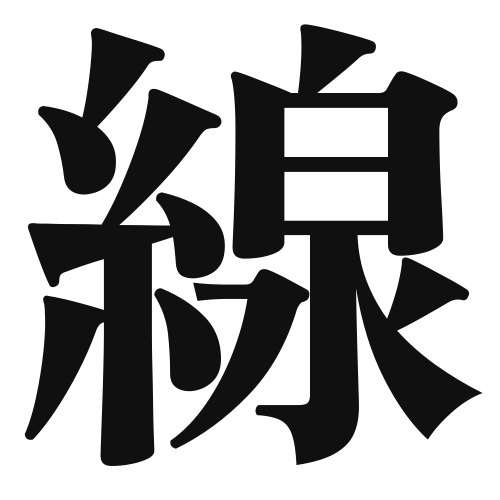1. Overview of Meaning
The kanji “線” (sen) means “line” or “wire.” It represents a straight or curved mark that connects two points, often used in various contexts such as geometry, art, and everyday life.
2. Formation and Radical
Formation of the Kanji: The kanji “線” is a compound character (会意文字) that combines two elements: “糸” (ito), meaning “thread,” and “仙” (sen), which can imply something ethereal or transcendent. Together, they convey the idea of a fine, delicate line.
Radical: The radical of “線” is “糸” (ito), which is commonly associated with threads or strings in various kanji characters.
3. Examples of Usage
Common Words and Phrases: Some frequently used words that include “線” are:
- 線路 (せんろ, senro) – railway line
- 線画 (せんが, senga) – line drawing
- 直線 (ちょくせん, chokusen) – straight line
Example Sentences in Daily Conversation:
- この線はどこに続いていますか? (Kono sen wa doko ni tsuzuiteimasu ka?) – Where does this line lead to?
- 彼は線画を描くのが得意です。 (Kare wa senga o kaku no ga tokui desu.) – He is good at drawing line art.
4. Synonyms and Antonyms
Similar Kanji: A similar kanji is “帯” (おび, obi), which means “belt” or “band.” While both can refer to something that encircles or connects, “線” specifically refers to a linear form, whereas “帯” implies a broader, more encompassing shape.
Opposite Kanji: An antonym for “線” could be “面” (めん, men), which means “surface” or “plane.” While “線” refers to a one-dimensional aspect, “面” refers to a two-dimensional area.
5. Cultural and Historical Background
Connection to Japanese Culture: In Japanese culture, lines are often associated with art forms such as calligraphy and ink painting, where the quality of the line can convey emotion and meaning.
Proverbs and Idioms: One common expression is “線を引く” (せんをひく, sen o hiku), which means “to draw a line,” often used metaphorically to indicate setting boundaries or limits in various contexts.
